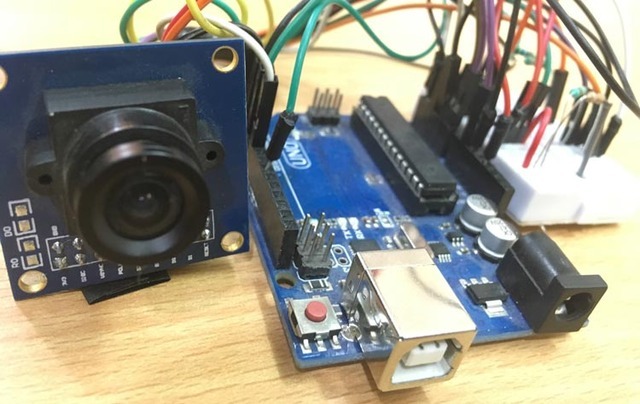

- ARDUINO CAMERA SLIDER REDDIT HOW TO
- ARDUINO CAMERA SLIDER REDDIT SERIAL
- ARDUINO CAMERA SLIDER REDDIT CODE
- ARDUINO CAMERA SLIDER REDDIT DOWNLOAD
String Addition Operator: Add strings together in a variety of ways. Character Analysis: Use the operators to recognise the type of character we are dealing with. RowColumnScanning: Control an 8x8 matrix of LEDs. Ping: Detect objects with an ultrasonic range finder. Knock: Detect knocks with a piezo element. ARDUINO CAMERA SLIDER REDDIT HOW TO
While Statement Conditional: How to use a while loop to calibrate a sensor while a button is being read. ARDUINO CAMERA SLIDER REDDIT SERIAL
Switch Case 2: A second switch-case example, showing how to take different actions based on the characters received in the serial port. Switch Case: How to choose between a discrete number of values. If Statement Conditional: Use an ‘if statement' to change the output conditions based on changing the input conditions. For Loop Iteration: Control multiple LEDs with a for loop and. Arrays: A variation on the For Loop example that demonstrates how to use an array. Virtual Color Mixer: Send multiple variables from Arduino to your computer and read them in Processing or Max/MSP. Serial Passthrough: Demonstrates how to virtually connect Serial and Serial1. Serial Event: Demonstrates the use of serialEvent(). Serial Call Response ASCII: Send multiple variables using a call-and-response (handshaking) method, and ASCII-encode the values before sending. Serial Call Response: Send multiple variables using a call-and-response (handshaking) method. Read ASCII String: Parse a comma-separated string of integers to fade an LED. Physical Pixel: Turn a LED on and off by sending data to your Arduino from Processing or Max/MSP. Multi Serial Mega: Use two of the serial ports available on the Arduino Mega. Midi: Send MIDI note messages serially.  Graph: Send data to the computer and graph it in Processing. Dimmer: Move the mouse to change the brightness of an LED. ASCIITable: Demonstrates Arduino's advanced serial output functions. There are also Max/MSP patches that can communicate with each Arduino sketch as well.
Graph: Send data to the computer and graph it in Processing. Dimmer: Move the mouse to change the brightness of an LED. ASCIITable: Demonstrates Arduino's advanced serial output functions. There are also Max/MSP patches that can communicate with each Arduino sketch as well. ARDUINO CAMERA SLIDER REDDIT DOWNLOAD
For more information or to download Processing, see.
ARDUINO CAMERA SLIDER REDDIT CODE
These examples include code that allows the Arduino to talk to Processing sketches running on the computer. Smoothing: Smooth multiple readings of an analog input.Fading: Use an analog output (PWM pin) to fade an LED.Calibration: Define a maximum and minimum for expected analog sensor values.Analog Write Mega: Fade 12 LEDs on and off, one by one, using an Arduino Mega board.Analog Input: Use a potentiometer to control the blinking of an LED.Analog In Out Serial: Read an analog input pin, map the result, and then use that data to dim or brighten an LED.Tone Pitch Follower: Play a pitch on a piezo speaker depending on an analog input.Tone Multiple: Play tones on multiple speakers sequentially using the tone() command.Tone Melody: Play a melody with a Piezo speaker.Tone Keyboard: A three-key musical keyboard using force sensors and a piezo speaker.State Change Detection: Count the number of button pushes.Digital Input Pullup: Demonstrates the use of INPUT_PULLUP with pinMode().Debounce: Read a pushbutton, filtering noise.Button: Use a pushbutton to control an LED.Blink Without Delay: Blink an LED without using the delay() function.Read Analog Voltage: Reads an analog input and prints the voltage to the Serial Monitor.Fade: Demonstrates the use of analog output to fade an LED.Digital Read Serial: Read a switch, print the state out to the Arduino Serial Monitor.Bare Minimum: The bare minimum of code needed to start an Arduino sketch.Analog Read Serial: Read a potentiometer, print its state out to the Arduino Serial Monitor.






 0 kommentar(er)
0 kommentar(er)
